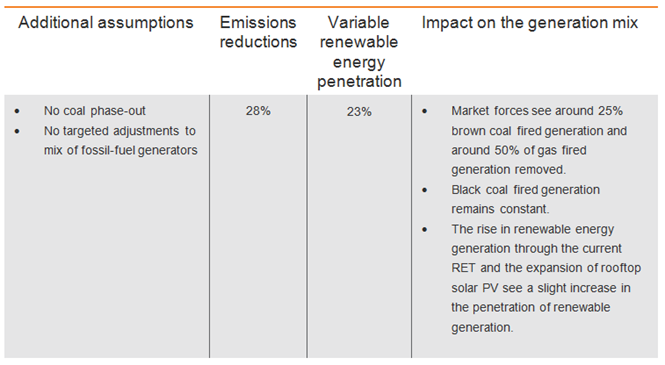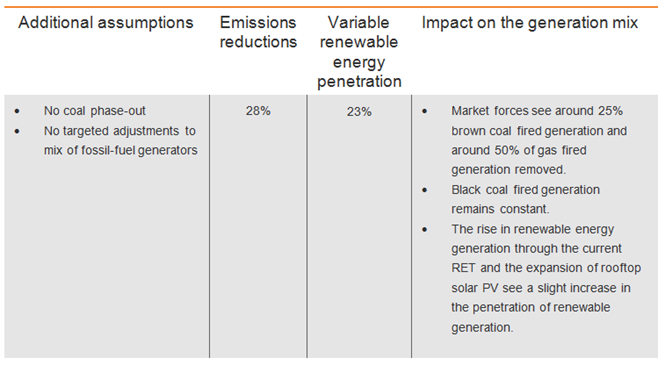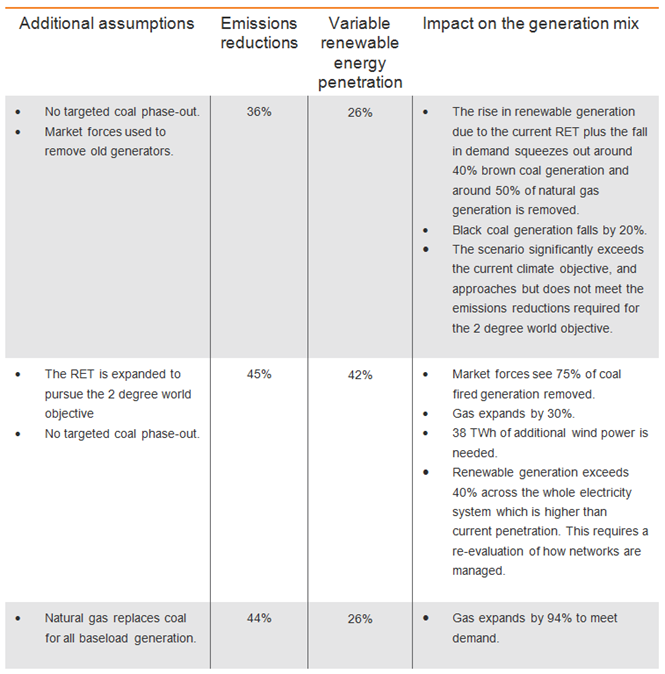It’s well known that efforts to drive improvements in the way energy is used, produce great outcomes for business, the broader economy and the environment. But what is not well understood is that lifting energy productivity, and thereby reducing the demand for energy, also supports the uptake of renewables.
Modelling by Energetics demonstrates that across a range of national energy productivity targets, from the current, arguably weak, 40% target through to a 100% improvement target, a reduction in brown coal fired power generation is achieved.
Click here to download a copy of the presentation I delivered at the recent Energy Productivity Summit 2017: Emissions and energy productivity - meeting current and future commitments.
Impacts of different energy productivity targets
• Economic outlook: the anticipated growth in Australia’s GDP through to 2030 is 54%. This is a key consideration in understanding the outlook for energy demand
• Climate targets: our National Determined Commitment for 2030 is a 28% reduction in emissions on 2005 levels. This is not in line with the Paris Climate Agreement of containing warming to within 2 degrees on pre-industrial temperature levels, or the aspirational target of 1.5 degrees
• Comparative position on energy productivity: Australia lags other developed economies.
Energetics assessed three energy productivity improvement scenarios. With each scenario we assume that the nation is working to meet its national 2030 emissions reduction target.
Scenario 1: Little change on ‘business as usual’
Target: 40% improvement in energy productivity relative to 2015 by 2030

On its own, the 40% energy productivity target delivers very little. In fact it creates problems. Energetics’ modelling shows that national emissions are only reduced by 21% on 2005 levels by 2030 and therefore we miss our national target. Also with the forecast expansion in the economy through to 2030 in the order of a 54% increase in GDP, demand for energy will actually rise by an estimated 9%.
Also, if the 40% energy productivity target is maintained and we assume that as a nation we push through other policy measures to deliver emissions reductions to meet our 28% goal, the use of renewables will expand and therefore the volume of coal fired generation must reduce - especially brown coal fired generation.
Scenario 2: Bridging to decarbonisation
Target: 76% improvement in energy productivity relative to 2010 by 2030

Energetics has considered a 76% target because, under this scenario, national demand for energy is held largely constant through to 2030. The result is the national emissions reduction target is achieved without requiring the Government to take specific disruptive measures to force changes to the generator mix.
However, market forces will see 25% of brown coal fired generation being retired and 50% of gas fired generation may also be forced out of the market.
A 76% uplift in energy productivity is a significant increase over business as usual and it is reasonable to expect that a range of policy interventions will be needed.
Scenario 3: Commitment to a low carbon future
Target: 100% improvement in energy productivity relative to 2010 by 2030


The 100% increase in energy productivity allows the nation to achieve the deeper cuts in emissions required by the 2 degree world objective. Our modelling indicates that this will be accompanied with extensive displacement of coal fired generation, which could extend through to the complete elimination of coal fired generation. We could then see either additional natural gas fired generation (leading to pressure on already constrained east coast gas supplies) or more renewable generation.
Improving energy productivity is critical for climate goals and the nation’s prosperity
Our analysis shows that increasing energy productivity is essential if the national emissions reduction target is to be achieved, with the additional, significant advantage of offering a relatively low cost way of driving down energy demand.
Energetics recommends:
• Lifting the energy productivity target: Our analysis shows that the current 40% target is barely above business as usual and is inadequate for meeting the current Nationally Determined Commitment (NDC)
• Funding the National Energy Productivity Plan: Any increase in energy productivity that is consistent with the emissions reduction target will be well beyond ‘business as usual’, and therefore policy interventions will be required to drive the necessary improvements. The 2017 Review should discuss the potential policy interventions required to drive increases in energy productivity and the level of funding necessary to implement these policies
• Finally, as decarbonisation of Australia’s energy generation is well underway, the 2017 Climate Policy Review will need to consider the levels of support required for a managed transition to an energy mix with a high level of renewables penetration.






